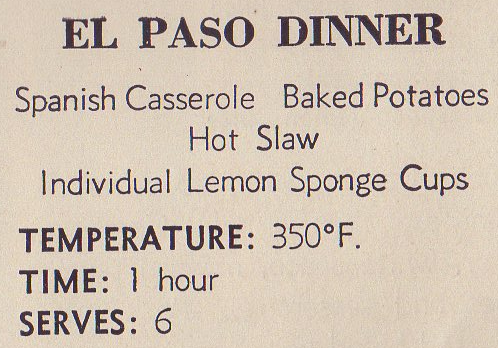Are you a Bohemian, a convert, a duchess, a person who has trouble with their in-laws, or a widow? If so, then today's book,
St. Ludmila Parish (Cedar Rapids, Iowa, 1975), is for you because St. Ludmila was the patron saint of all those things (at least, if
Wikipedia is to be believed).
I had no idea what kolaches were before going through this book. I'm guessing based on this recipe title that they're pronounced "kolacky."
I love the quotation marks to indicate that the spelling is intentionally wacky.
Even though this book offers a LOT of kolach recipes, they often don't fully explain the concept. This recipe seems fine right up until the abrupt ending of "Ready to make whenever wanted."
There's absolutely no indication of what to do with the dough once it's risen. Shape it into a loaf, proof again, and bake? Roll into doughnut shapes and deep fat fry? Shape, boil, and bake like a bagel? This recipe wasn't coddling anyone who didn't already know.
The oil variation is similarly vague.
At least cooks at the time who had no internet access to figure out the rest of the steps knew that they could cinnamon-roll-ify the dough if they made it without reading ahead to realize they better already know how to kolach-ify it.
For those who were worried about cholesterol, the book even offers a cholesterol-free version.
It also offers the vague instruction to "shape into [24] rolls or kolaches" before baking them, so we're getting somewhere. If you don't know the shape, though, this can only take you so far.
This recipe is much more helpful, noting that the dough should be rolled out, cut into rounds (at least, that's what I assume "cut with glass" means), risen, filled, and baked at 400 degrees for 12-15 minutes.
So it looks like kolaches are kind of like a yeast dough version of a thumbprint cookie?
The fillings are a bit more involved than they typically are for thumbprint cookies, though. Here's just a partial list (because I was too lazy to turn the page and scan some more).
Most of these (aside from the cholesterol-free version) are from the opening chapter, one that's all Czech recipes. The chapter suggested that the Czechs really love yeasted doughs, as it had multiple recipes for yeasted dumplings.
I thought dumplings were more of a quick bread. The versions I've had have always been gloopy and gummy, so why spend more time disappointing your family than you need to when you could have made real bread with a golden-brown crust? I've never had yeasted dumplings, though, so maybe they're better than the Bisquicky version?
If you're wondering whether the chapter offers strudel, it does! In addition to the expected apple strudel, there's a cabbage version.
I thought it would be all savory, but then I noticed the cinnamon, sugar, and raisins. And then I saw cheddar cheese. So maybe a kind of an apple-pie-with-cheddar vibe, only instead of apples, it's cabbage and raisins in the cinnamon sugar? (Plus some graham cracker crumbs on top, though they're not listed in the ingredients!) I'm so confused.... I can't quite imagine going to the trouble of making a homemade dough only to fill it with this seemingly-random assortment of ingredients.
These cooks seem willing to put a lot of effort into everything, though. There's a recipe for a a LOT of sausage.
I can't imagine too many home cooks today trying to deal with a cooking and grinding a hog's head, heart, tongue, and a third of its liver, then adding 2-1/2 pounds of bread soaked in 2 quarts of meat broth, two pounds of cooked barley, and assorted seasonings, much less trying to stuff all that into casings before boiling, draining, and freezing. I'm exhausted just thinking about it.
Hell, the Czech home cooks even used to make their own snack crackers out of sauerkraut and cracklings, at least if this book is to be believed.
I can't even be bothered to scan a second page of kolach fillings, and they were content to make weird homemade snacks at a time when Ritz crackers already existed! I bow down to the industriousness of all those cooks past (even if I want nothing to do with anything but the kolaches). Thanks to my sister for sending in this collection!















































